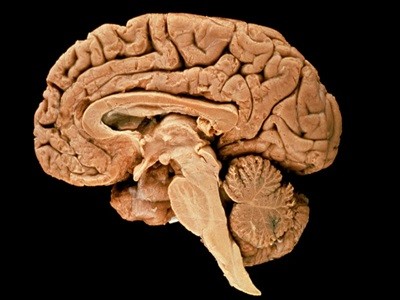
How human brains got so big: our cells learned to handle the stress that comes with size
原始链接: https://www.nature.com/articles/d41586-025-01515-z

研究人员发现了一个人类独有的基因片段,称为HARE5,它能显著增加小鼠的脑容量。通过将人类版本的HARE5插入小鼠基因组,与未经基因改造的小鼠相比,它们的大脑体积增大了约6.5%。这段DNA片段就像一个基因调节器,它增加了Fzd8基因的活性,并促进放射状胶质细胞(神经干细胞,发育为神经元)的增殖。人类HARE5导致小鼠大脑细胞分裂和神经元产生增加。这一发现为了解与人类大脑相对于灵长类近亲的大幅增大相关的进化机制提供了潜在的见解。虽然这项研究证明了HARE5与脑生长之间存在明确的联系,但目前尚不清楚小鼠大脑的增大是否导致了认知能力的增强。研究人员的目标是进一步研究HARE5对认知和记忆的影响。

Researchers have identified a genetic dial in the human brain that, when inserted in mice, boosts their brain size by about 6.5%.Credit: Sergey Bezgodov/Shutterstock
Taking a snippet of genetic code that is unique to humans and inserting it into mice helps the animals to grow bigger brains than usual, according to a report out in Nature today1.
The slice of code — a stretch of DNA that acts like a dial to turn up the expression of certain genes — expanded the outer layer of the mouse brain by increasing the production of cells that become neurons. The finding could partially explain how humans evolved such large brains compared with their primate relatives.
This study goes deeper than previous work that attempted to unpick the genetic mechanisms behind human brain development, says Katherine Pollard, a bioinformatics researcher at the Gladstone Institute of Data Science and Biotechnology in San Francisco, California. “The story is much more complete and convincing,” she says.
How the human brain grew to be so big and complex remains a mystery, says Gabriel Santpere Baró, a neuroscientist who studies genomics at the Hospital del Mar Medical Research Institute in Barcelona, Spain. “We still do not have a definitive answer to how the human brain has tripled in size since our split from chimpanzees” during evolution, he says.
How human brains got so big: our cells learned to handle the stress that comes with size
Previous studies2,3 have hinted that human accelerated regions (HARs) — short snippets of the genome that are conserved across mammals, but which underwent rapid change in humans after they evolutionarily diverged from chimpanzees — could be key contributors to brain development and size. But the exact mechanisms that underlie the brain-building effects of HARs are yet to be uncovered, says study co-author Debra Silver, a developmental neurobiologist at Duke University in Durham, North Carolina.
To build a clearer picture, Silver and her colleagues zoomed in on one HAR, called HARE5, that they discovered a decade ago4. In mice, this snippet of DNA is known to boost the expression of the Fzd8 gene, one of the big players behind the development and growth of neural cells. The research team compared the effects of HARE5 in mice, chimpanzees and humans.
When the researchers swapped a human version of HARE5 into living mice in place of the animals’ own version, the animals’ brains grew to be 6.5% larger than in non-engineered mice by the time they were adults. The brain-enhancing booster was most active in neural stem cells called radial glia, which eventually develop into neurons and other brain cells. The human HARE5 increased the division and proliferation of the glia, and the cells went on to produce more neurons than they did when under the influence of the mouse version of HARE5.
It is so far unclear whether mice that grew larger brains got a boost in cognition or memory, Silver says.